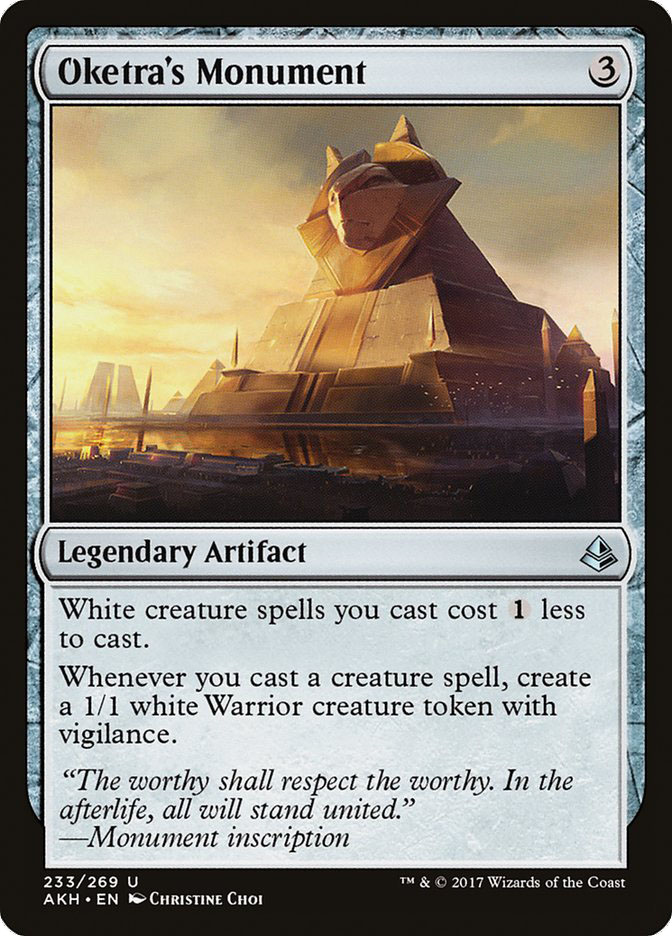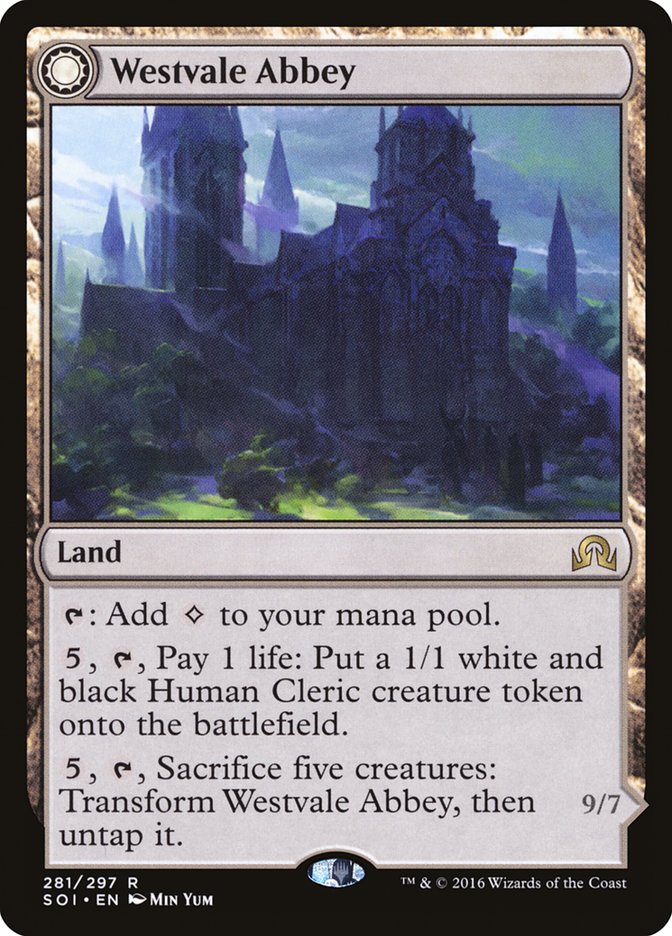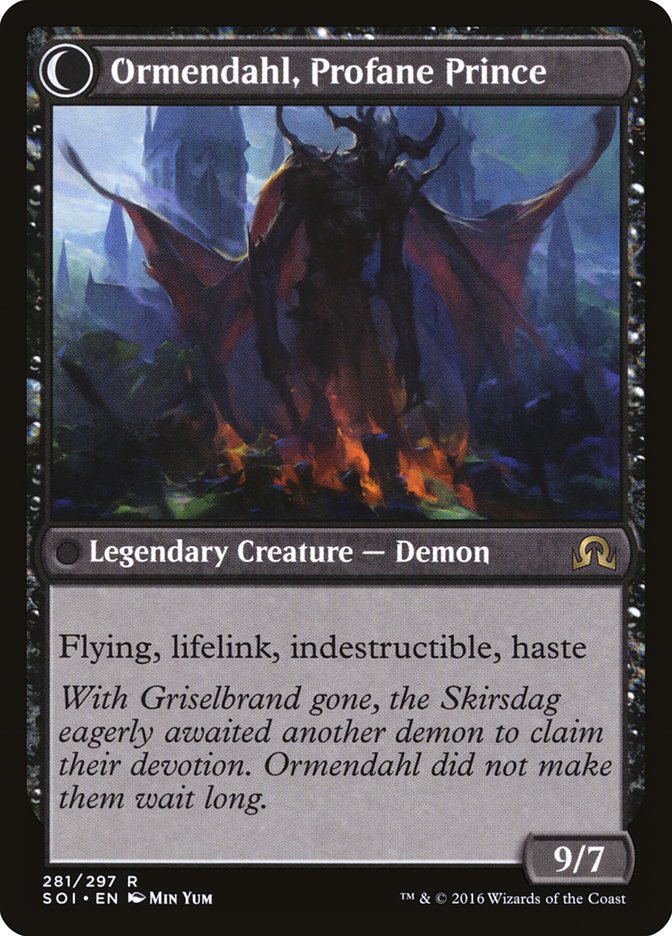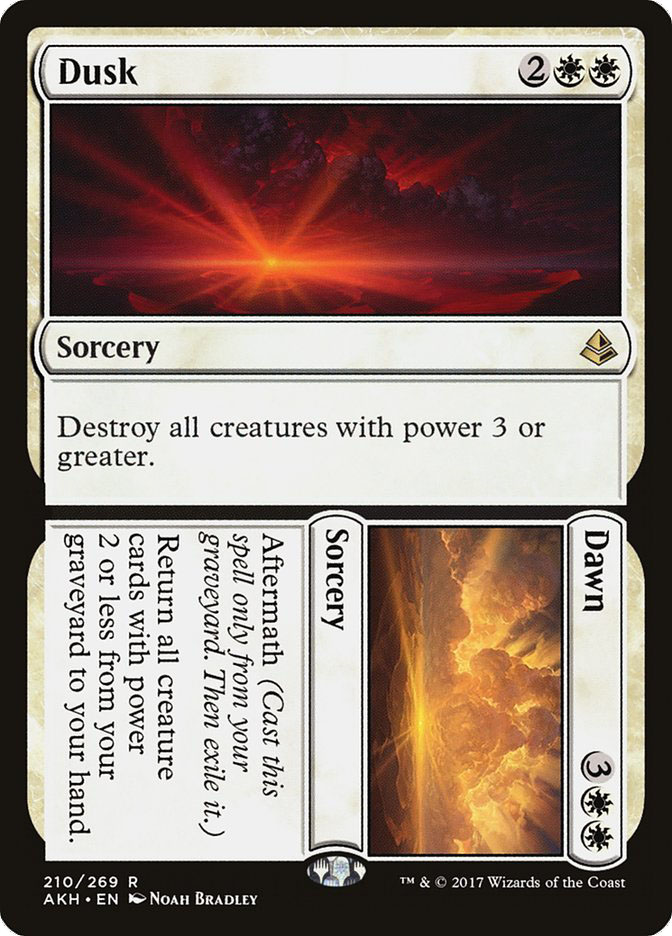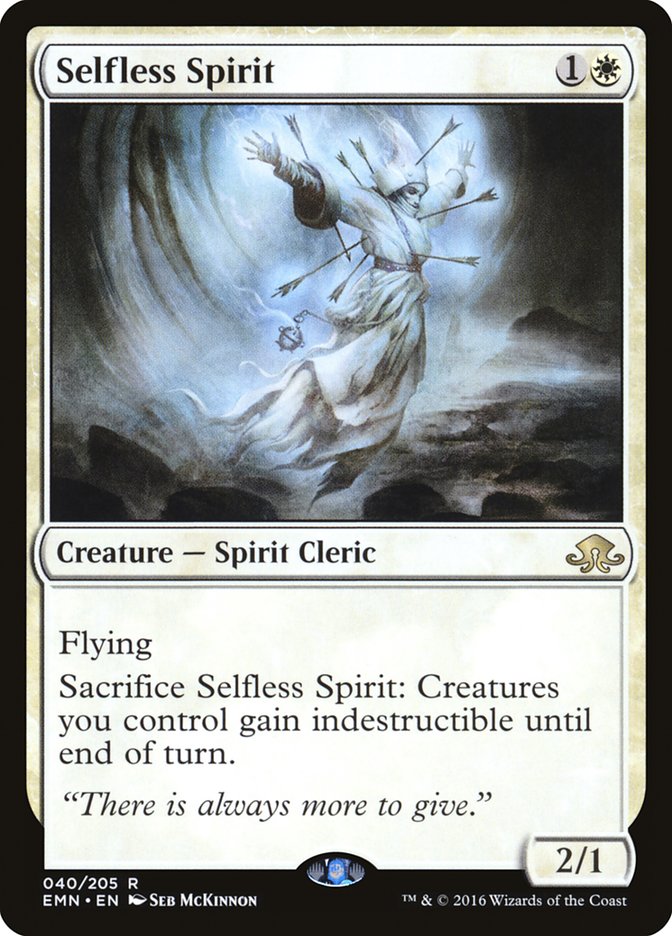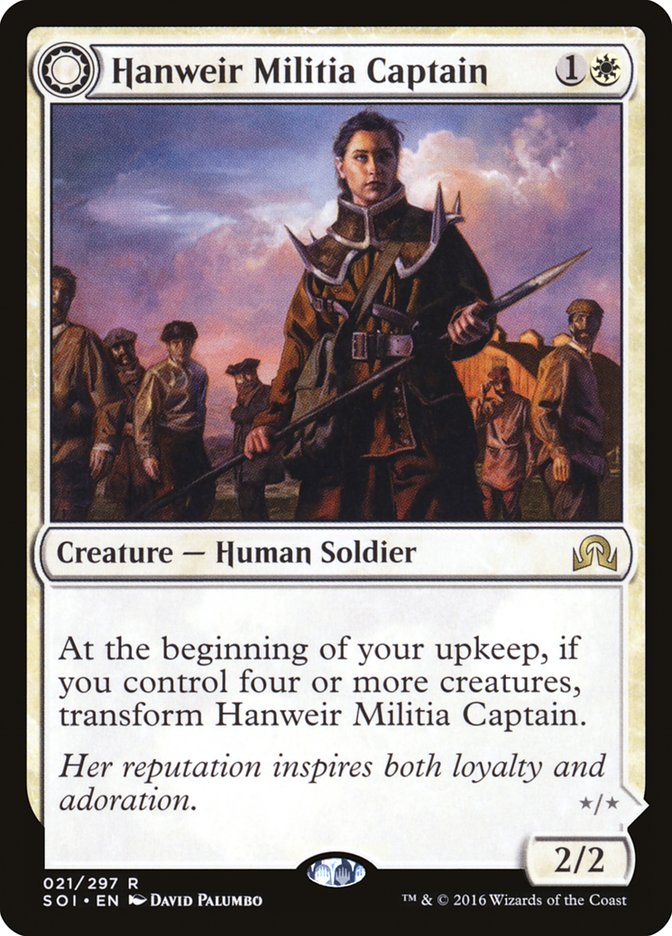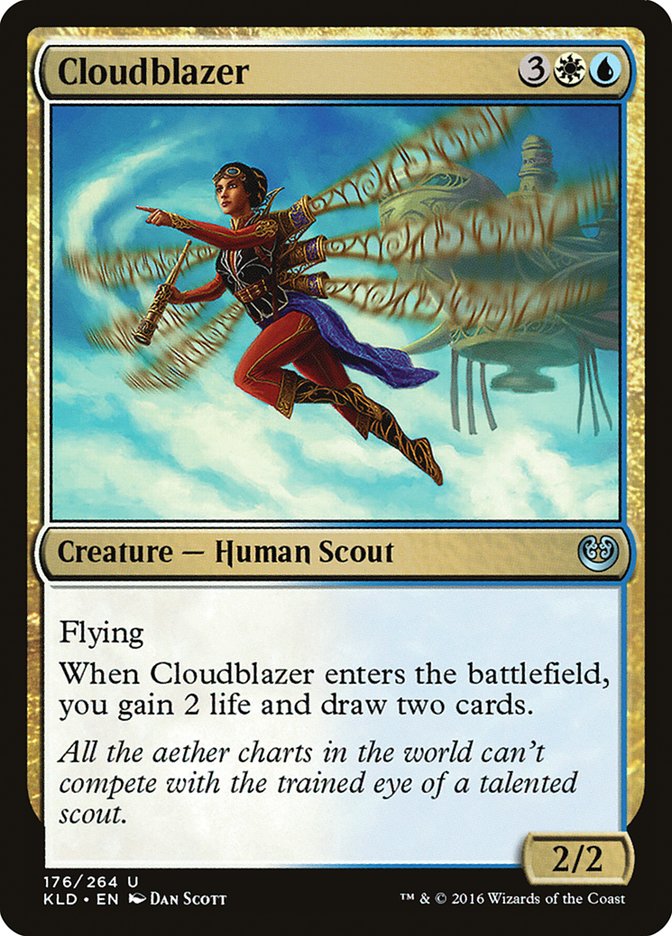With Ixalan just around the corner, we’ll be saying farewell to both Battle
for Zendikar block and Shadows Over Innistrad block. #GPDC will be the
final hurrah for the current Standard format, and I can honestly say I’m
sad to see it go. The last year has been a rocky one for Standard,
featuring the banning of five cards:

These five cards have, at one point or another, dominated the Standard
format and consequently made me a bigger fan of Modern. But that’s not what
we’re going to be talking about today. For those of you attending #GPDC, I
wanted to give you everything I have on one of my favorite decks in the
format: W/U Monument. While it hasn’t changed much in the last few months,
including with the release of Hour of Devastation, there are some things
that you need to know if you plan on piloting this deck this weekend.
First up, here’s the list I recommend, and the one I’ll likely be playing.
Creatures (24)
- 4 Bygone Bishop
- 4 Thraben Inspector
- 4 Hanweir Militia Captain
- 4 Spell Queller
- 4 Selfless Spirit
- 4 Cloudblazer
Lands (25)
Spells (11)

Testing Dump
As you can see, not a lot has changed since the StarCityGames.com Season
One Invitational. A couple of Shefet Dunes were a welcome addition to the
manabase, giving you a little more to do with your lands if you started to
flood out, and, if you’re familiar with the deck at all, you’ll know that
this deck floods out quite a bit. That is partially due to Cloudblazer
taking up the top slot, but also the clues you generate from both Thraben
Inspector and Bygone Bishop. While I’ve tried playing fewer lands, you can
usually find ways to spend the excess mana as the game progresses.
If you’ve played this deck before you probably already know that casting
your two-drop creature on the second turn of the game isn’t always correct.
If you have an Oketra’s Monument in hand it is often correct to wait a turn
or two before casting your two-drop so that you create a 1/1 warrior. Every
creature you can create matters for pushing you closer to summoning
Ormendahl, Profane Prince. While most decks that have Westvale Abbey use it
as a backup plan, this deck wins many games by transforming it. At the very
least it can speed up your clock by a turn or two, and there aren’t too
many spells in Standard that can deal with such a large, indestructible
threat.
W/U Monument is a midrange deck, plain and simple. And, to be clear, it’s
one of the best midrange decks for fighting other midrange decks and
aggressive strategies. We’re usually an underdog to ramp and certain
versions of control, but that is the cost we pay for being a bit slower
than other midrange decks. And, if I’m being honest, that’s the price we
pay for relying on one card to do a lot of the heavy lifting. Do you really
think Bygone Bishop would be a format staple without Oketra’s Monument?
The main draw for playing this deck is the raw power of Oketra’s Monument,
as well as the one-sided wrath of Dusk // Dawn. While Dusk // Dawn won’t do
a whole lot against Ramunap Red or control, it will singlehandedly swing
unwinnable games in your favor against the rest of the format. Temur Energy
will really feel the heat that this card brings, but it is also serviceable
against Zombies, thanks to Liliana’s Mastery and Lord of the Accursed, as
well as B/G Constrictor with all of their +1/+1 counters. You also don’t
want to underestimate the back half of the card since games with W/U
Monument can go pretty long, and bringing back creatures with it is
reliable. Plus, when you have Oketra’s Monument in play, you can regularly
cast the creatures on the same turn you use the back half!
At times you will feel like you’re playing a different format, in both a
good way and a bad way. You’ll have draws that feature Oketra’s Monument
and those that don’t, and those two draws will feature drastically
different games. While you can still win games without casting Oketra’s
Monument, it’s never easy. This doesn’t mean you should aggressively
mulligan to find Oketra’s Monument though, especially since drawing a
second copy can be pretty bad (it’s Legendary, which is something I missed
at first), and you want to make sure to hit all of your land drops to be
able to crack your clue tokens.
Don’t be afraid to cast Spell Queller onto an empty battlefield, you don’t
always need to get the value from exiling a spell with it. While saving
Spell Queller for the right spell can be important, and could change the
texture of a game, the truth is that it will be a lightning rod for their
removal spells. The damage you can start to accrue from a lone Spell
Queller could be enough to tip the race in your favor a few turns down the
line. Much like Snapcaster Mage in Modern, I don’t think people beat down
with Spell Queller enough. If it’s your only threat, or it changes the
clock you’re putting on the opponent, the value you gain by casting it
immediately could drastically outweigh the advantage gained by exiling an
opponents’ spell.
As far as sequencing is concerned, it’s almost always correct to lead with
Selfless Spirit over Hanweir Militia Captain. For starters, your Selfless
Spirit should be used to protect your more important creatures. Plus,
flying is a bonus in the early game, and can allow for some cheap shots
before you get into the more important turns of the game. Chip damage is a
big deal in this deck, and is one of the easier ways you can win games
without Oketra’s Monument.
If you reach a point where you have the option to cast Cloudblazer or hold
up a counterspell, it is generally correct to cast Cloudblazer. However, if
you’re playing against ramp or Torrential Gearhulk that might not be the
case as decks that have one or two important cards that are must-counters
are the exception to this. I just wanted to be clear here, because I see a
lot of people playing too passively. You want to utilize your mana to the
best of your ability, and Cloudblazer is a slam dunk in terms of what you
accrue from mana spent. Just think about the worst case scenario, and if
you’ll lose on the spot for tapping out, contemplate the impact your
decision will have on the rest of the game. If all you’re going to be
staring down is a Glorybringer, and you’re at a healthy life total, just
jam!
The Matchups
With the random thoughts out of the way, let’s get into the decks you’ll be
playing against, and how you should approach each matchup. Sideboarding
will be a little tricky in some scenarios, and you’ll likely have to get a
little scrappy with some of your changes, but the deck is very good at
shifting gears. In some spots, you’ll want to slow the game down and
utilize the extra cards generated by Cloudblazer and Bygone Bishop. In
others, you’re on a short clock, and you need to try to close the game as
quickly as possible.
Ramunap Red
Thraben Inspector is your most important card in the matchup. I would snap
keep just about any hand that had Thraben Inspector as my first turn play,
so long as I had at least one other land and one other spell. As the game
progresses, you want to use all your resources to keep your life total
high. Trade creatures away as quickly as possible, and try to get a
foothold on the battlefield. As the game progresses, you’ll want to
leverage Oketra’s Monument as best as you can, but that won’t always be
possible. They usually play some number of Abrade, but there is a good
chance they’ll have to throw those at your creatures first.
While it is often important to play Oketra’s Monument as quickly as
possible, you might not always have that luxury against Ramunap Red. If
taking the turn off to cast an artifact will put you too far behind, then
it might not be worth it.
A “tempo black hole” if you will.
Here’s how I sideboard (this one’s easy!):
Out:

In:

While Cloudblazer could be swapped out for Angel of Sanctions, I do like
the extra life gain and cards generated. And since you don’t have a whole
lot of time to be casting five drops, I don’t recommend bringing in three
more and leaving Cloudblazer in. A 2/2 split might be worthwhile though.
Temur Energy
Dusk is your most important card in the matchup since their creatures will
easily outsize yours, the trick is finding the right spot to cast it. You
don’t want to cast it too early and lose to a Glorybringer, but you also
don’t want to wait too long and take too much damage. I would say that
casting it to kill two or more creatures is ideal, and only cast it to kill
one creature if absolutely necessary.
Out:

In:

This is the matchup you want Essence Scatter the most. Not only can it stop
them from generating a bit of energy, but you solve most of your problems
before they start. Cards like Glorybringer and Bristling Hydra can be huge
headaches once they’ve hit the battlefield, and especially so when your
opponent gets access to a few sweeper effects. While using Essence Scatter
to counter something like Rogue Refiner can be fine, just use your best
judgment on what to counter and when. You don’t want to hold your counters
too long, but you also don’t want to use them on something that’s going to
get swept up by Dusk in a turn or two.
Declaration in Stone isn’t that useful in the matchup, but starts to get a
lot better when you see a Rhonas the Indomitable from the opposite side of
the table. If that’s the case, feel free to bring it in.
B/G Constrictor
Another matchup where Essence Scatter shines. Your plan here is very
similar to the plan against Temur Energy, except Dusk won’t always be a
home run. In fact, you might have to take a big hit from Verdurous Gearhulk
and/or Winding Constrictor before firing it off. Their removal isn’t too
tough to beat, but the games you’re going to lose involve an early clock
followed by two or three copies of Fatal Push or Grasp of Darkness.
They’ll have a tough time beating Oketra’s Monument, but you’ll also have a
tough time beating a large Walking Ballista.
Out:

In:

While Angel of Sanctions might be decent, I don’t think it’s worthwhile
here. Grasp of Darkness and other non-Fatal Push removal spells make it
unreliable, and you’re also playing against a deck with creatures that have
“enter the battlefield” abilities. Stasis Snare, while similarly dangerous,
won’t get destroyed often enough to care.
Selfless Spirit comes out because of how bad it is against Walking
Ballista. Plus, any sweeper they have after sideboard will be hitting your
toughness as opposed to dealing damage, such as Yahenni’s Expertise or
Flaying Tendrils. You can cut one Oketra’s Monument in some matchups,
including this one, because it will rarely get hit by artifact destruction,
and post-sideboard games will likely go longer than usual.
W/U Monument
I’m not going to sugarcoat it. The mirror match is awful. In fact, there is
a small chance you don’t even get to see sideboard cards because game one
usually takes forever. Angel of Sanctions is one of the better sideboard
options, but will occasionally get hit by a Stasis Snare or Declaration in
Stone. In previous builds, I’ve had some copies of Fragmentize, but I think
we’re long past that.
Oketra’s Monument is probably the most important card, but the game is
literally won or lost on the back of flying creatures. If you can get an
active Bygone Bishop, you might just beat out the advantage gained by an
opposing Oketra’s Monument. If you have both going, and your opponent
doesn’t, then you’re a huge favorite to win the game. There is so much
jockeying for position in the early turns, but it all boils down to who
generates the most creatures. The game will very likely come down to a
board stall, and one person will eventually overpower the other.
Out:


In:


While fliers are important in the first game, post-board is much more about
controlling which creatures resolve. Essence Scatter, Spell Queller, and
the removal spells do a great job of containing opposing Spell Quellers and
Bygone Bishops. Selfless Spirit can be great at deterring alpha strikes, so
cutting them could ultimately be a mistake, but I don’t like it nearly as
much as Hanweir Militia Captain and I can’t think of any other creatures
I’d rather cut.
U/R Control
Game one of these matchups will be a bit tough, but not unwinnable.
Torrential Gearhulk can be a major problem, but you do have ways to
interact with it. Countering it via Essence Scatter or Metallic Rebuke will
often win the game on the spot. I’ve even hit a few with Dusk before, and
then later used Dawn to bury them in card advantage.
They will have a very tough time beating a resolved Oketra’s Monument
unless they have Abrade, and they will have ways to contain your board from
getting too big. Your plan should be to deploy two creatures, three if one
is Selfless Spirit, and ride those to victory. You don’t have many
counterspells in the first game, but your entire plan shifts after
sideboard.
Out:

In:

I would bet that Hanweir Militia Captain never flips in this matchup, and
therefore it’s the worst creature of the bunch. Stasis Snare and Dusk are
you ways to kill a resolved Torrential Gearhulk, but I think the primary
plan should be to keep it from hitting the battlefield. You can survive a
few hits from it, and hopefully chump block it should the game come down to
that.
Mono-Black Zombies
I’ve seen some smarter players sideboard out both Lord of the Accursed and
Liliana’s Mastery to dodge Dusk, but I don’t even know if that’s correct.
If their creatures aren’t larger than yours, you should be able to
out-position them on the battlefield.
In all honesty, I haven’t come close to losing this matchup yet. Your plan
is to just trade when it’s necessary, and then try to flip Westvale Abbey
to close it out. You should be able to overload their removal spells and
ultimately beat them with fliers.
Out:

In:

The Bad News
There are two decks in the format that are very bad matchups, and there
isn’t a whole lot you can do to make them better. I will say that Gerry
Thompson recently reminded us that Invasive Surgery is a card that exists
in Standard, and happens to be quite good against one of your bad matchups.
G/X Ramp
You don’t win quickly, and you’re relatively vulnerable to sweeper effects.
Both of these things play right into the ramp player’s plan. Game one is
nearly unwinnable, but after sideboard you have a few tools to help shift
the matchup in your favor.
Out:

In:

Try to save your early counters for Hour of Promise, but don’t be afraid to
use one to save your squad from a sweeper effect; you do have to kill your
opponent, after all. Essence Scatter, while not perfect, may be the easiest
way for you to steal games. Ulamog, the Ceaseless Hunger has a strong
effect against you, but you can survive the triggered ability if you’re
able to eliminate the creature itself from the equation. There’s a good
chance your opponent also has access to Walking Ballista, World Breaker, or
some other midrange creature, so you will have a couple targets for Essence
Scatter, and those targets will be important to counter.
I’m not going to sugar-coat this for you: Ramp is a bad matchup. You can
win, but it won’t be easy. You’ll get into some spots that you feel is be
impossible to lose, only to have everything crumble in the blink of an eye.
Trust me, I’ve played both sides of this matchup, and I’ll take the ramp
side all day long.
I don’t have a lot of experience playing against this archetype, but I do
know that it is almost impossible to beat the deck when they get
God-Pharaoh’s Gift to resolve. We don’t have any disenchant effects, and we
don’t have any graveyard hate. We barely have counterspells that can hit
Gate to the Afterlife and therefore we’ll be treating them like they don’t
exist. Luckily, we have a few sideboard cards that can provide us some
help, but I don’t think it will be enough.
Out:

In:

Maybe I’m being a little pessimistic, since we do have Spell Queller and
Metallic Rebuke for a little interaction, but I’m not convinced it will be
enough. Regardless, you can still win if you have the right draw and their
plan doesn’t really come together. Just hope for the best (and that you
don’t play against it)!
Conclusion
As we say farewell to this Standard format, I’m really hoping that Ixalan
will bring some good tidings as I really don’t know if Standard will
survive another broken format. So far, a lot of the cards previewed seem to
be on the lower side of the scale in terms of power level. While the cards
previewed so far may not look to match up well against energy and vehicles,
there’s still a lot of cards to come.
Personally, I’m looking forward to playing Pirate tribal!
But at the same time, we’re also losing two blocks that have seemingly been
around forever. I have to think back quite a long time to remember a white
deck that didn’t have Gideon, Ally of Zendikar in it. Bant Heroic, I think.
Regardless, it’s the end of an era, and I’m happy it’s ending on a high
note: a healthy Standard format featuring ten or so playable archetypes
where most decks are interacting with each other.
After this weekend, I’ll be shifting focus toward Ixlan Standard in both
the Versus Series as well as my articles. And while the power level might
not look like it’s there just yet, I’m pretty happy about getting to cast
some Dinosaurs.
Rawr.


